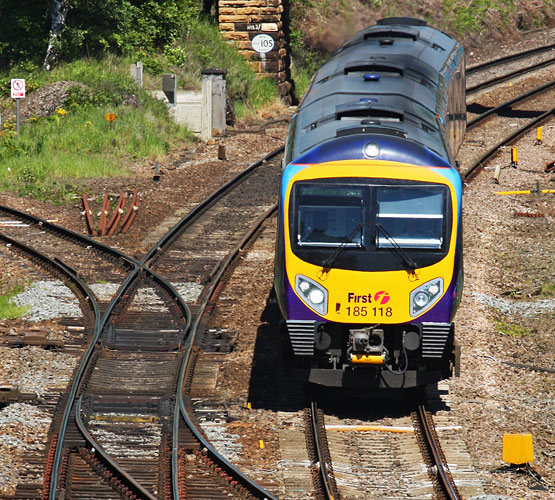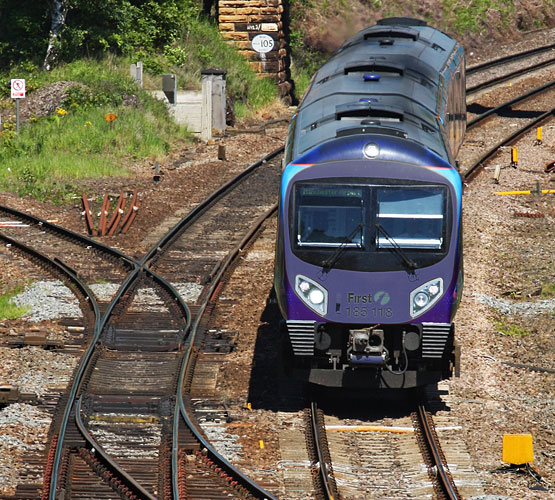|
Dave Brailsford revolutionised British Cycling. Under his leadership, Team GB led the sport’s medal table at the 2008 and 2012 Olympic Games, winning eight gold medals at both. In part he did that by championing the philosophy of ‘marginal gains’ which involved breaking down the act of competitively riding a bike into its many component parts, then strived to improve each by 1%. Its success is self-evident, pushing overall performance up to a level that had previously been unattainable.
We can - and do - apply a similar principle to the safety of our on-track workforce. Realistically, no single intervention will prevent deaths, injuries and unsafe acts. If such a panacea existed, the industry would surely have taken it. But what can be achieved is to deliver incremental benefits by refining competence, risk management and front-line safeguards.
In the early days of the railway, many platelayers lost their lives to locomotives they hadn’t seen. Nowadays, every prime mover is fitted with a headlight. As steam gave way to diesel, train visibility was further enhanced by the now-familiar panel of yellow paint on the front end. This latter ‘marginal gain’ was simple, practical and effective; yet a trackworker’s ability to rely on it has now been lost at the behest of Standards custodians.

New Railway Group Standard GM/RT2131 (Audibility & Visibility of Trains) came into force on 5th March. It establishes a framework for the introduction of new or modified rail vehicles onto the mainline network. Those complying with the headlamp requirements in the Technical Specification for Interoperability (TSI) for Locomotives and Passenger Rolling Stock (LOC & PAS) are no longer obliged to have a yellow front end.
The Standard asserts that “The presence of a headlamp meeting the requirements of the LOC & PAS TSI will give sufficient visual warning that a train is approaching.” ‘Will’ is a big, unequivocal word in this context. There can be no doubt that headlights have got considerably brighter over recent years, to the point where they might be regarded as dazzling on occasions. But whether the Standards committee has tested its assertion in direct sunlight or where the train comes into sight on a curve - resulting in the headlight being viewed off axis - is not clear.
Responsibility for ensuring that a train is visible to those who need to see it is now being devolved, typically onto the operating company. In choosing a front-end colour other than yellow, a collection of risks will have to be assessed. These include -
- all operating conditions likely to be experienced by the train
- any impact on the safety of trackworkers, passengers, members of the public and level crossing users
- the effect of front-end colour on the perceived position of a stationary train when a driver is undertaking a permissive move into a platform occupied by another unit
- reliability and maintenance of the headlamps
- all relevant duties under health and safety legislation.

In other words, what was straightforward has just become over-complicated. Effectively, the Standard now says that there is no standard.
Whatever happens in the years to come, it’s worth asking a couple of pertinent questions. Are trackworkers more or less safe as a result of this change? Notwithstanding the headlight, if it was historically beneficial to improve every train’s visibility by adding a panel of yellow paint, why is that no longer the case?
What the Standards committee has done here is to remove a requirement which might prevent a near miss - or worse - in an unfortunate conspiracy of circumstances. And to what end? Is there an overarching performance need for a train’s front end to be a colour other than yellow? Will it free-up money for investment elsewhere? One suspects not. This is about corporate livery: a purely cosmetic issue in both the literal and metaphorical senses.
|
| This is about corporate livery: a purely cosmetic issue in both the literal and metaphorical senses. |
|
For a highly-scrutinised industry that professes a commitment to safety, this conscious downgrading provides ammunition to the sceptics who believe actions speak louder than words. Change is an inherently good thing; without it there is no progress. Just ask Dave Brailsford. But there needs to be positive motivation driving it. Whilst yellow front ends might only be a ‘marginal loss’, how confident can we be that it won’t prove a critical one for some ill-fated trackworker?
Story added 6th April 2016
|